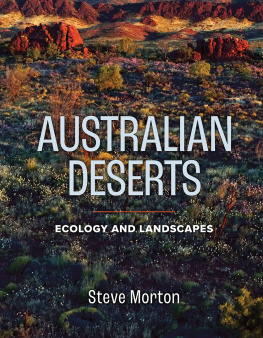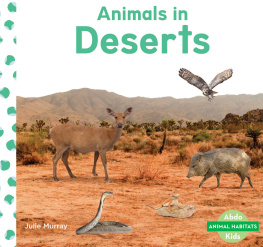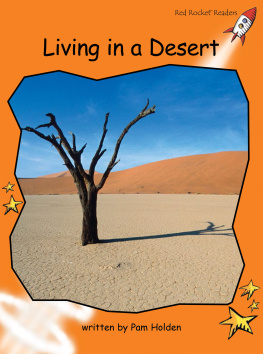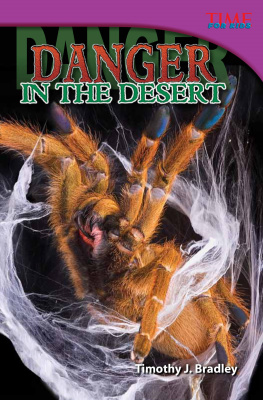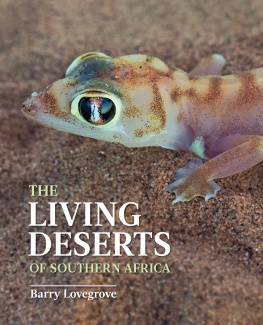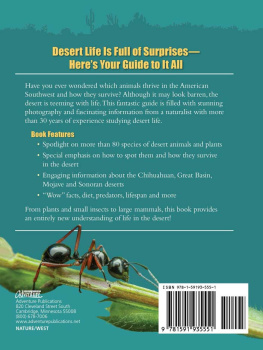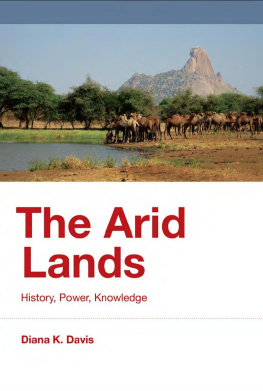Table of Contents
Steve Morton 2022
All rights reserved. Except under the conditions described in the Australian Copyright Act 1968 and subsequent amendments, no part of this publication may be reproduced, stored in a retrieval system or transmitted in any form or by any means, electronic, mechanical, photocopying, recording, duplicating or otherwise, without the prior permission of the copyright owner. Contact CSIRO Publishing for all permission requests.
Steve Morton asserts his right to be known as the author of this work.
A catalogue record for this book is available from the National Library of Australia.
ISBN: 9781486305995 (pbk)
ISBN: 9781486306008 (epdf)
ISBN: 9781486306015 (epub)
How to cite:
Morton S (2022) Australian Deserts: Ecology and Landscapes. CSIRO Publishing, Melbourne.
Published by:
CSIRO Publishing
Locked Bag 10
Clayton South VIC 3169
Australia
Telephone: +61 3 9545 8400
Email:
Website: www.publish.csiro.au
Sign up to our email alerts: publish.csiro.au/earlyalert
Front cover: Foothills of the MacDonnell Ranges, with rich plant life dominated in the foreground by mulla mullas (photo by Mike Gillam).
Back cover: Itjaritjari, a marsupial mole, on a rare excursion to the surface of a sand dune (photo by Mike Gillam).
Title page: Budgerigars in synchronised flight, caught at the instant when their wings have folded (photo by Mike Gillam).
Set in 10.5/14 Palatino and Optima
Edited by Anne Findlay, Melbourne
Cover design by Cath Pirret
Typeset by Envisage Information Technology
Index by Bruce Gillespie
Printed in China by Leo Paper Products Ltd
CSIRO Publishing publishes and distributes scientific, technical and health science books, magazines and journals from Australia to a worldwide audience and conducts these activities autonomously from the research activities of the Commonwealth Scientific and Industrial Research Organisation (CSIRO). The views expressed in this publication are those of the author(s) and do not necessarily represent those of, and should not be attributed to, the publisher or CSIRO. The copyright owner shall not be liable for technical or other errors or omissions contained herein. The reader/user accepts all risks and responsibility for losses, damages, costs and other consequences resulting directly or indirectly from using this information.
Acknowledgement
CSIRO acknowledges the Traditional Owners of the lands that we live and work on across Australia and pays its respect to Elders past and present. CSIRO recognises that Aboriginal and Torres Strait Islander peoples have made and will continue to make extraordinary contributions to all aspects of Australian life including culture, economy and science. CSIRO is committed to reconciliation and demonstrating respect for Indigenous knowledge and science. The use of Western science in this publication should not be interpreted as diminishing the knowledge of plants, animals and environment from Indigenous ecological knowledge systems.
The paper this book is printed on is in accordance with the standards of the Forest Stewardship Council and other controlled material. The FSC promotes environmentally responsible, socially beneficial and economically viable management of the worlds forests.
Oct21_01
Contents
Nature documentaries became popular in the 1980s because of David Attenboroughs wonderful film making. At the time I was a young scientist in Alice Springs and enjoyed many experiences working with film crews keen to display the red Australian desert on screen. On one occasion I met with a visiting group in our laboratory, to advise on potential locations for various scenes, and then welcomed them on their return some days later. I was familiar with conditions in the bush and used to seeing people come back to town unkempt and in dirty clothes but this group looked as if they had spent the week in a dust storm. The reason became apparent when I asked how things had gone. Wonderfully well. We got nearly everything we were after, and quickly, but we could not find the images we needed of blowing sand dunes. In the end we fixed the problem by clearing the spinifex off a dune and creating a big expanse of bare sand. We finished this morning with a good wind. Excellent outcome!
I was a polite young man, so I smiled and congratulated the group on a successful trip. Internally, though, I remember disquieting feelings of ecological disorientation. What on Earth did they think they were doing? The spinifex they had removed is a tough desert plant with its own distinctive story of desert life, and home to a unique array of specialised animals. But my film makers had brought with them in their minds an unshakeable picture of wind-blown dunes, derived of course from typical images of the Sahara Desert, and reality had been erased to serve a myth. The scientist in me declared in favour of realities, of telling of arid Australia as it is. Some decades later, this motivation to describe the place on its own merits lies behind my book.
Inland Australia is known to most Australians only by reputation or by fleeting visit, so an overlay of fable is to be expected. In any case, myths often serve their own good purposes, and I am not driven by any need to tear them apart. Rather, as an ecologist, I want to speak up about what we do know of the Australian deserts. Scientists are thin on the ground, yet over the past decades they have created a body of learning that reveals much about the Outback, about its plants and animals, and about how through evolutionary time these occupants of the desert came to call it home. I attempt here to distil that knowledge.
The book is based on science, although it is written as a narrative rather than as a scientific text, without ranks of numbers or tables of statistical analysis. A glossary explains necessary scientific terms, yet they are kept to a minimum. Each section aims to draw out what is most illuminating about the lives of a group of plants or animals, especially in relation to peculiarities of climate and continental history. Each chapter finishes with summaries of what has been learned.
Management of natural resources is not considered in the book. Such topics have, indeed, frequently stimulated much of the research that is summarised, yet I have left them mostly on the periphery. Likewise, traditional knowledge of Aboriginal people, their land management, and their influences on the environment of inland Australia are of great significance, as mentioned in several sections. Yet both these matters demand their own focus, and several fine book-length treatments of them are recommended to readers in Chapter 9.
The book is a celebration of the Australian deserts, of 5 million square kilometres of wonderful . Additionally, it is a tribute to the patient and diligent accumulation of knowledge by numerous scientists and of their insights into why arid Australia is as it is. I hope that it enhances your understanding as you experience the Outback for yourself.
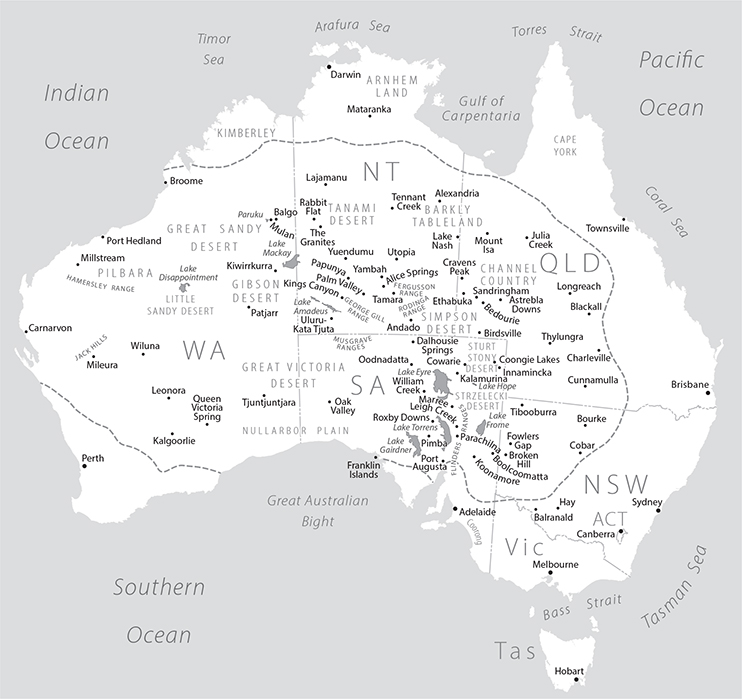
Fig. 0.1. Map of Australia showing places mentioned in the text.
Illustrations
The photographs are by Mike Gillam, with only three images credited otherwise. Mike Gillam lives in Alice Springs and his photographs focus on his home region of central Australia. He and I had to confront the impossibility of representing the variety of the entire arid zone in a modest number of photographs, and so we decided to use his images to reflect the text for this one part of the Outback as a representation of the whole.

